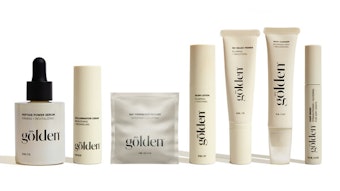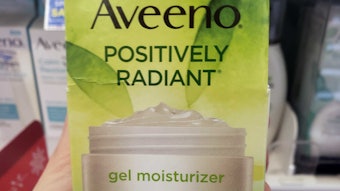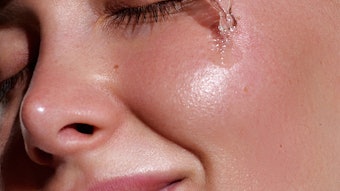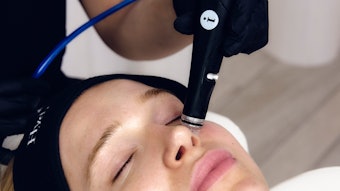
Read the full article in the May 2021 digital edition. . .
In chemistry, pH is a crucial symbol. More precisely, it is the abbreviation of the “potential of hydrogen” or “power of hydrogen” in a concentration scale used to specify the acidity, neutrality or basicity of aqueous solutions. At 25°C, aqueous solutions with a pH value lower than 7 are in the acidic field, while solutions with pH greater than 7 are basic. Solutions with pH 7.0 at this temperature are neutral. The mathematical expression of pH is the following, and is used to describe a very low concentration with simple logarithm numbers: pH=−log[a(H+)]. Here, a(H+) is the activity (i.e., active concentration) of the hydrogen ions in the aqueous solution.
Why is this parameter so important? How does it influence daily life? In food digestion, pH plays a important role in the stomach. Hydrochloric acid (HCl), a component of gastric juice, is important for creating the pH required for pepsin activity—the principal enzyme involved in protein digestion. Parietal cells produce HCl by secreting hydrogen and chloride ions. When pepsinogen and hydrochloric acid exist together in the gastric juice, the pepsin assumes its active form.1
In soil, pH plays a major role in the growth of plants and crops. The ideal pH for good plant growth is between 6.3 and 7.3. If the soil pH is more acidic, lime is added to neutralize its acidity while gypsum can be added to neutralize the basicity of soil.2
As far as the prevention of tooth decay, certain foods increase the acidity of the mouth, therefore dropping the pH level. This effect pertains to sugary drinks, snacks and some grains. The saliva buffering effect can help neutralize the excess acid but the pH of saliva can become even more acidic after eating acidic foods. It can take from a few minutes to a few hours for the pH of the mouth to be neutralized. During that time, the low pH in the oral cavity creates an optimal environment for bad bacteria, which eventually causes tooth decay.3 Moreover, the chemical composition of dentine and tooth enamel is endangered because calcium hydroxyl phosphates can be dissolved by acids.
pH in Cosmetics
Specific to cosmetics, pH is a key parameter beginning from the formulation phase until the evaluation of the formula effect on the skin. The pH value of the skin surface is considered a critical parameter of cutaneous well-being. Typically studied on the forearm, skin pH shows significant variability in consideration of gender, age and body area. Women have a higher pH value of around 4.9, whereas in men it is around 4.7. Considering age, infants have an average pH value of around 6.5.
As noted, different body sites have different pH values4 and it is generally recognized that the application of a cosmetic product can significantly affect the skin’s pH. For instance, research has shown a close relationship between the pH of a body cleanser and the degree of its influence on skin surface characteristics.5 In other work, the use of alkaline soaps with a pH of 10.5 to 11.0 resulted in a higher skin surface pH and marked increase in the number of Propionibacteria.6
In acne-prone young adults, cleansing facial skin with an alkaline agent was reported to cause a more inflammatory reaction than an acidic syndet bar.5 On the other hand, repeatedly washing the skin with an acidic skin cleanser (i.e., pH 5.5—similar to the normal skin pH in adults) increased the equilibrium pH of the skin surface. Of course, the change is significantly lower than what is induced by alkaline soap.7, 8
The buffer capacity of the skin surface also has been studied, and the time to achieve a steady state can vary from 2 hr to days. This time is proportional to the number of daily applications and variance between the pH of the applied product compared with the skin value. It appears evident that the pH value of a cosmetic containing water should, if possible, be lower than 5.0.
This raises the question: is it always possible (and desirable) to maintain this pH value?
pH for Emulsification
The stability of an emulsion is the main goal of cosmetic formulators. Often, the importance of pH for designing the correct conditions to obtain an emulsion and keep it stable over time is not adequately taken into consideration.
The earliest emulsion formulations were based on simple fatty acid salts (i.e., soaps) such as sodium or potassium palmitate/stearate. Variation in the pH of the aqueous solution can lead to a change of the ratio between stearate and free stearic acid and, therefore, modify the viscosity, stability and sensorial characteristics of the finished product.
Some modern cosmetic formulations such as mascara or hand/foot creams still contain this traditional emulsifier system. Here, after application to the skin, the alkaline stearate can precipitate and give rise to the free stearic acid form. This assures a strong film-forming effect and water resistance of the product layer.
If the pH of an emulsion is too low (pH < 4), ester bonded emulsifiers such as PEG-X and poly-glyceryl alkanoates tend to slowly hydrolyze, becoming unstable and developing undesirable odors.9 On the contrary, ethoxylated fatty alcohols guarantee far better stability at such a pH.
. . .Read more in the May 2021 digital edition. . .
References
- Heda, R., Toro, F. and Tombazzi, C.R. (Updated 2020, May 24). Physiology, pepsin. StatPearls. Available at: https://www.ncbi.nlm.nih.gov/books/NBK537005/
- Gentili, R., Ambrosini, R., Montagnani, C., Caronni, S. and Citterio, S. (2018, Sep 20). Effect of soil pH on the growth, reproductive investment and pollen allergenicity of Ambrosia artemisiifolia L. Front Plant Sci. Available at: https://www.frontiersin.org/articles/10.3389/fpls.2018.01335/full
- Dawes, C. (2003, Dec). What is the critical pH and why does a tooth dissolve in acid? Available at: https://pubmed.ncbi.nlm.nih.gov/14653937/
- Wiechers, J.W. (2008, Dec). Formulating at pH 4-5: How lower pH benefits the skin and formulations. Available at: https://www.cosmeticsandtoiletries.com/research/chemistry/229618021.html
- Korting, H.C. and Braun-Falco, O. (1996, Jan/Feb). The effect of detergents on skin pH and its consequences. Available at: https://www.sciencedirect.com/science/article/abs/pii/0738081X9500104N
- Korting, H.C., et al. (1987). Influence of repeated washings with soap and synthetic detergents on pH and resident flora of the skin on forehead and forearm. Available at: https://pubmed.ncbi.nlm.nih.gov/2436413/
- Gfatter, R., Hackl, P. and Braun, F. (1997). Effects of soap and detergents on skin surface pH, stratum corneum hydration and fat content in infants. Available at: https://pubmed.ncbi.nlm.nih.gov/9407174/
- Korting, H.C., Hübner, K., Greiner, K., Hamm, G. and Braun-Falco, O. (1990). Differences in skin pH and bacterial microflora due to long term application of synthetic detergent preparations of pH 5.5 and pH 7.0. Available at: https://pubmed.ncbi.nlm.nih.gov/1980979/
- Obukowho, P. and Woldin, B. (2001, Aug). Selecting the right emollient ester. Available at: https://media.cosmeticsandtoiletries.com/documents/CT_116_08_061_09.pdf











